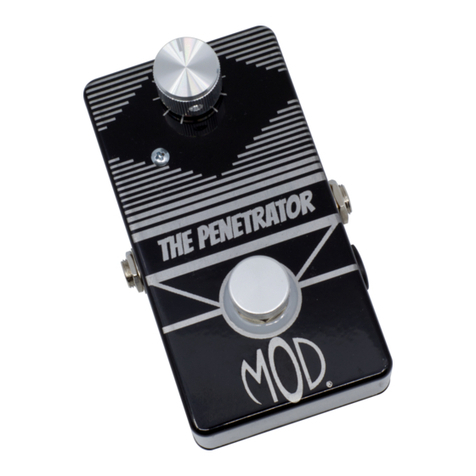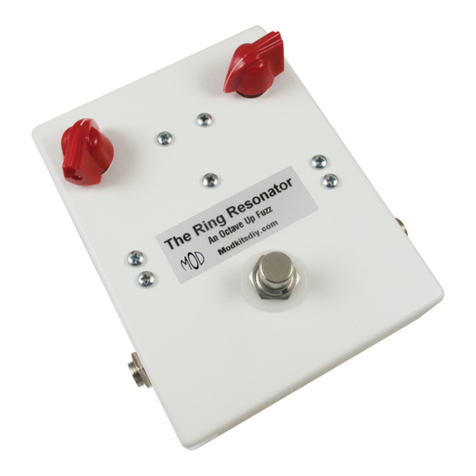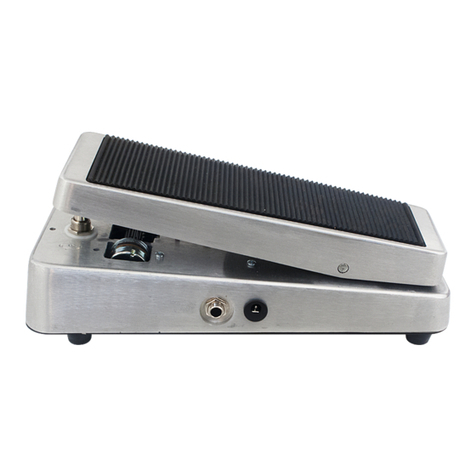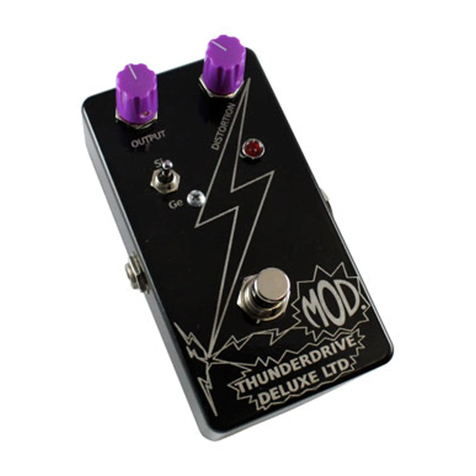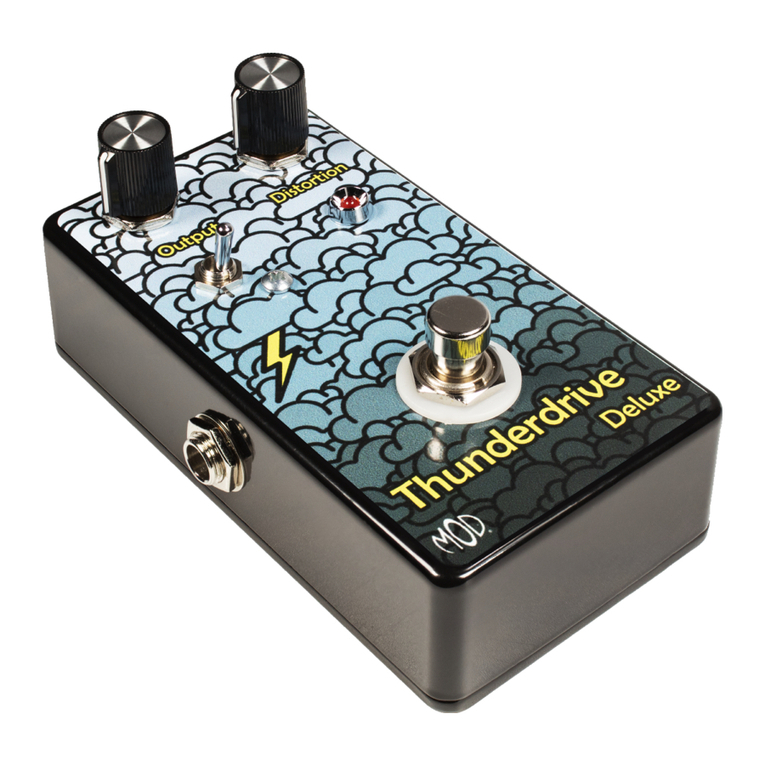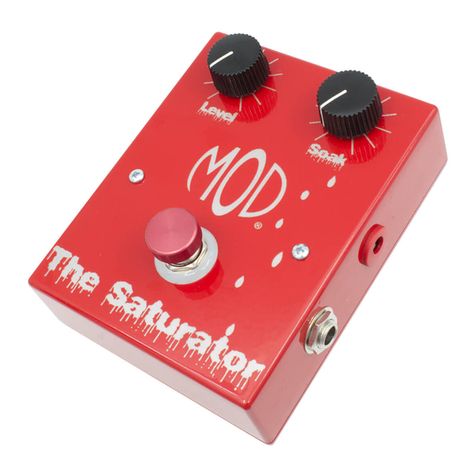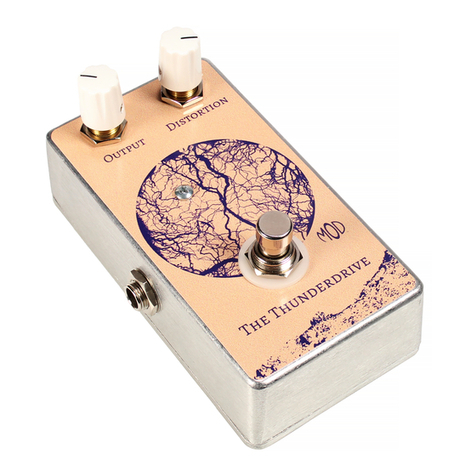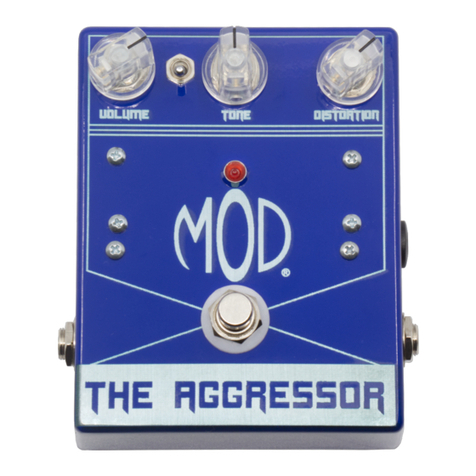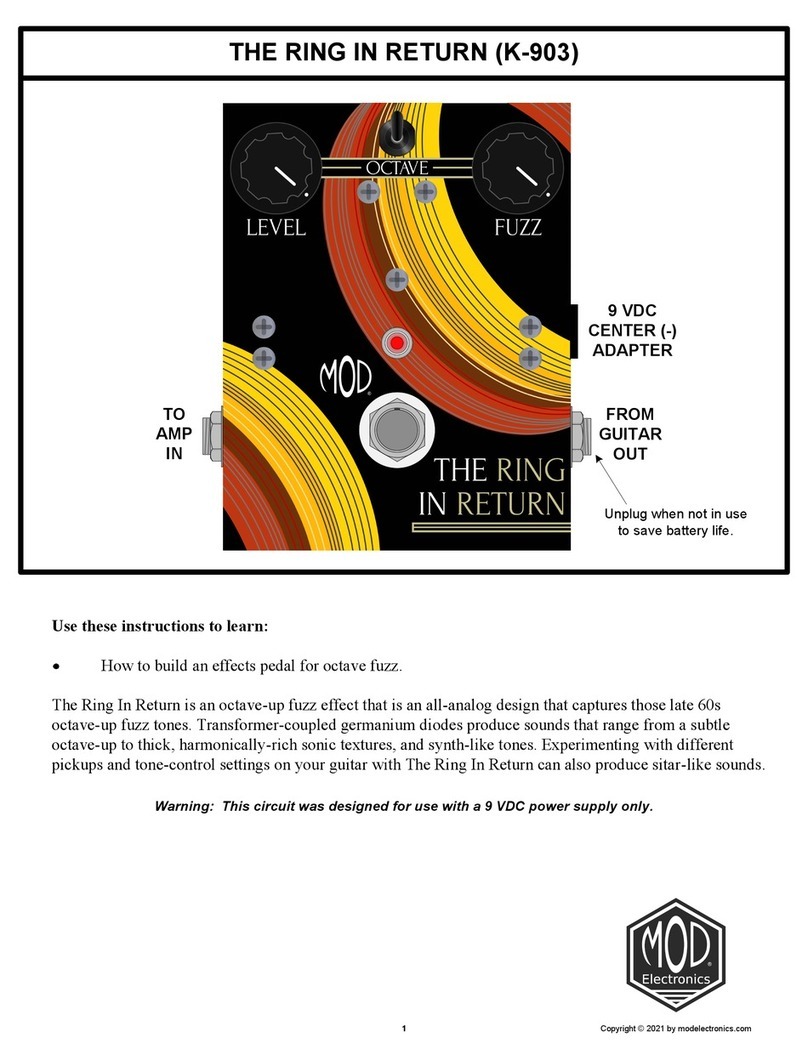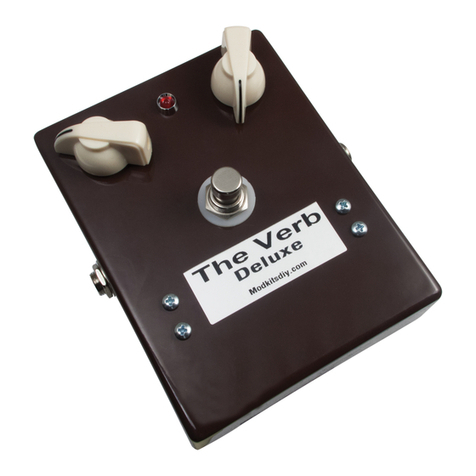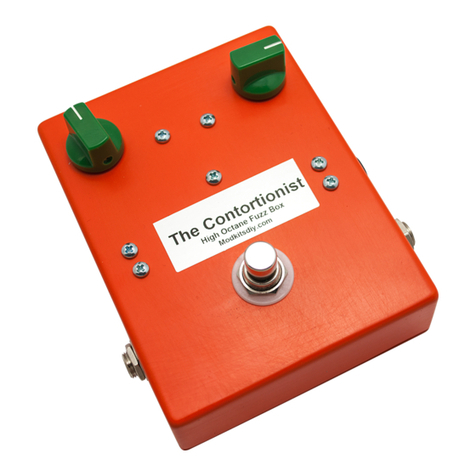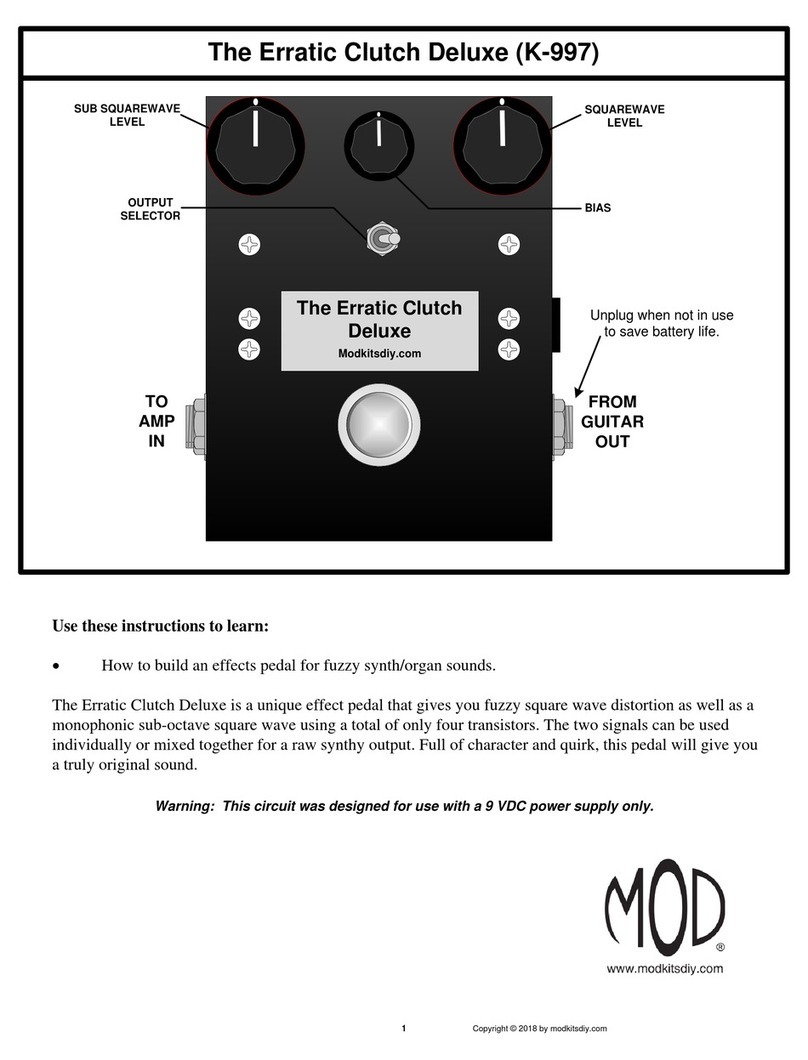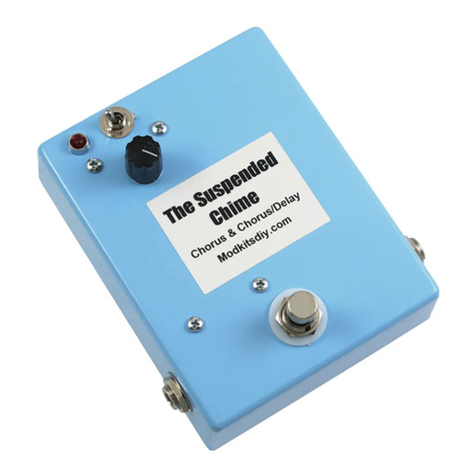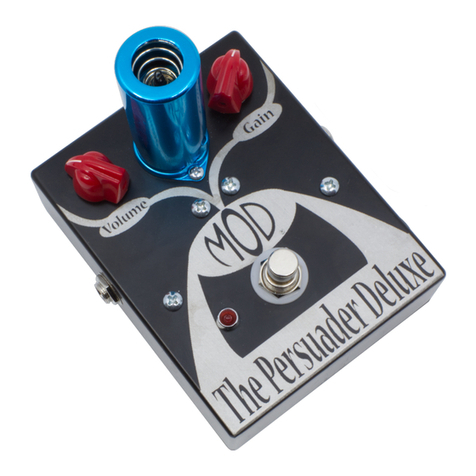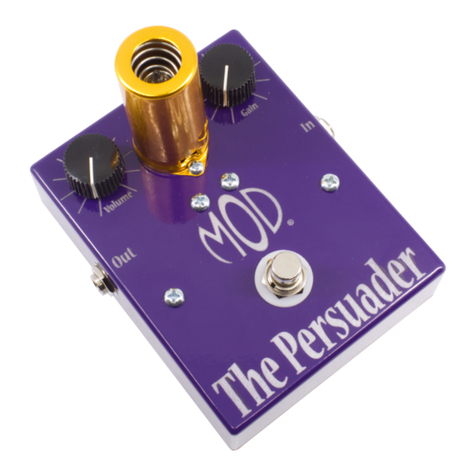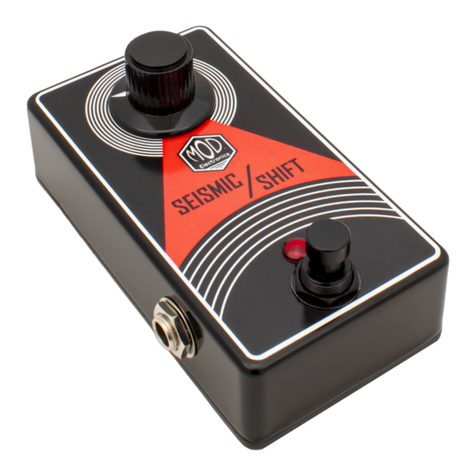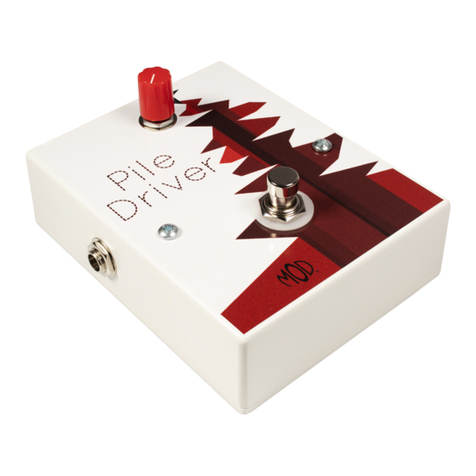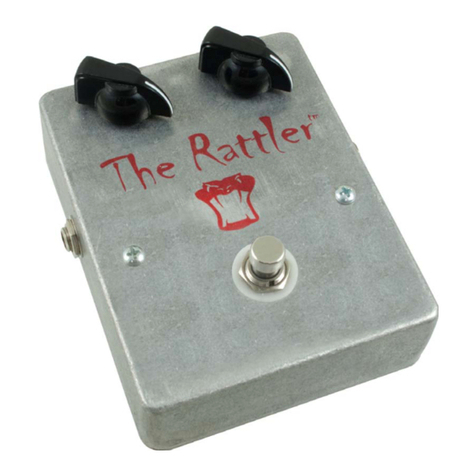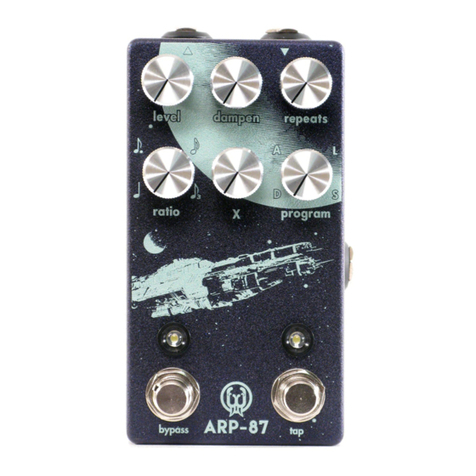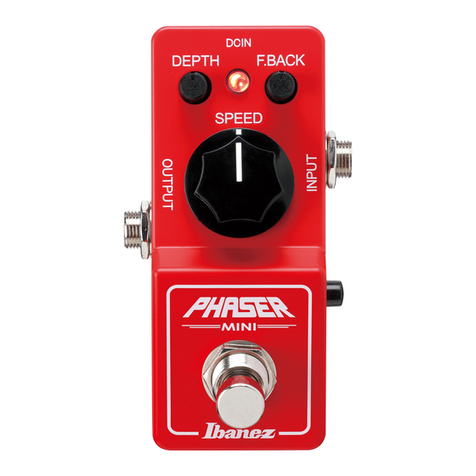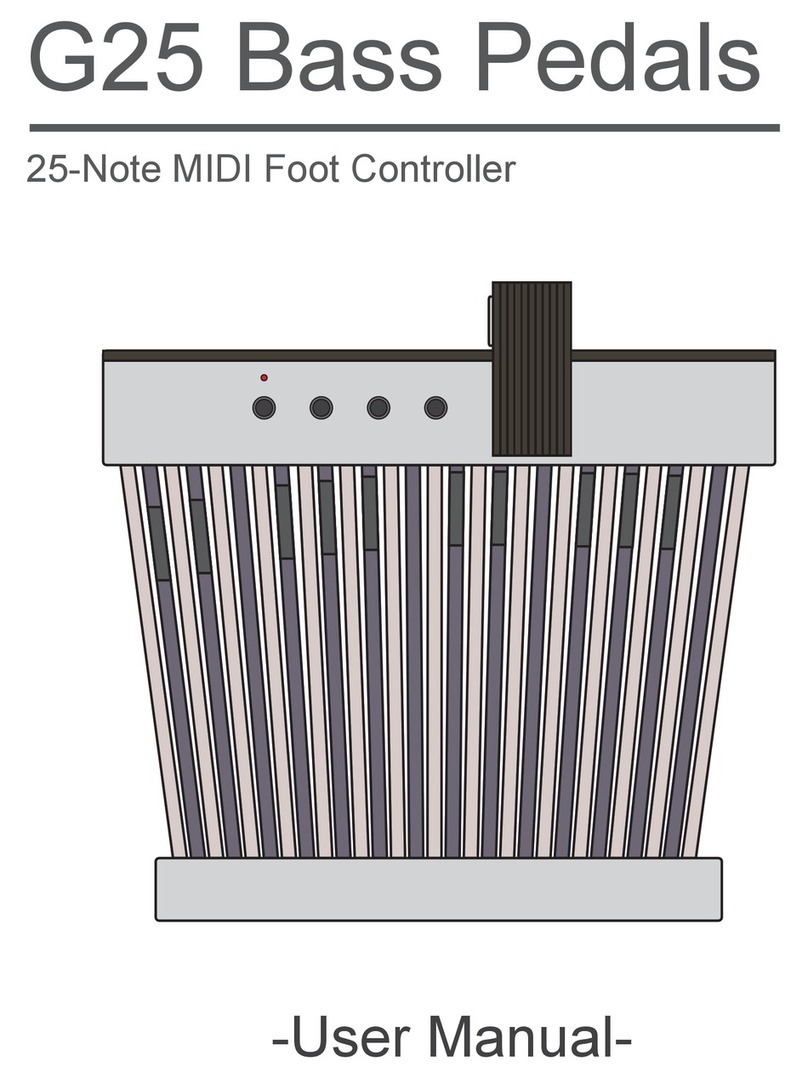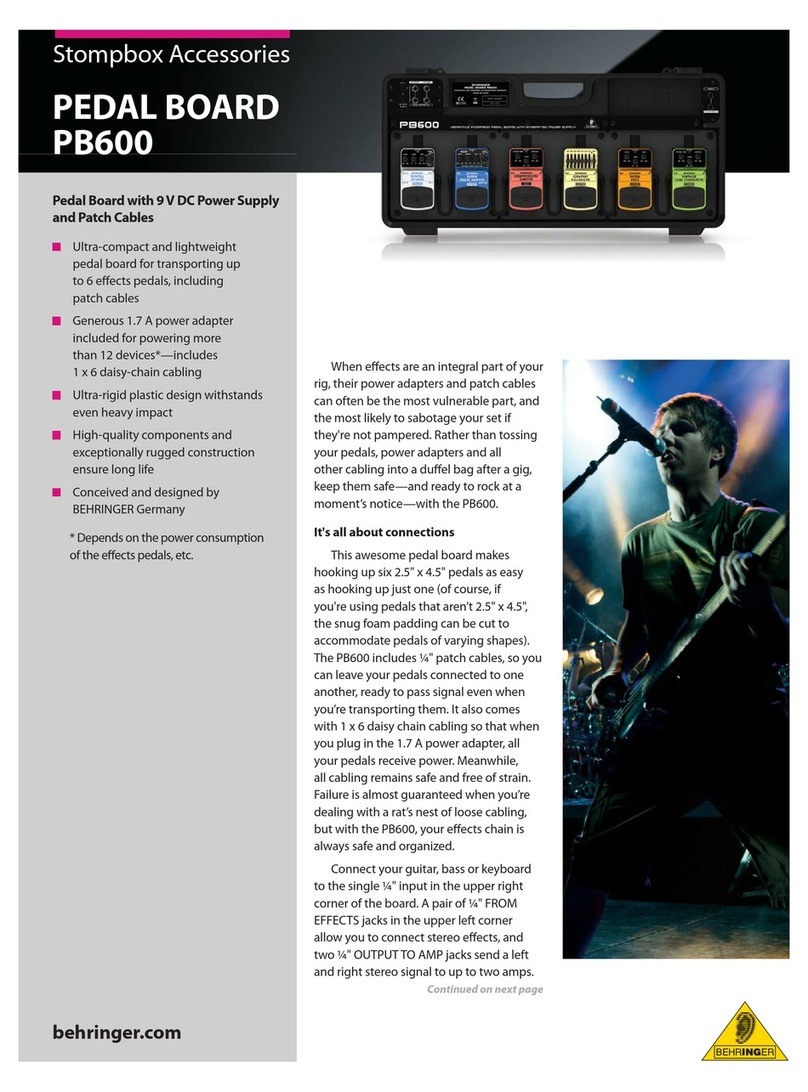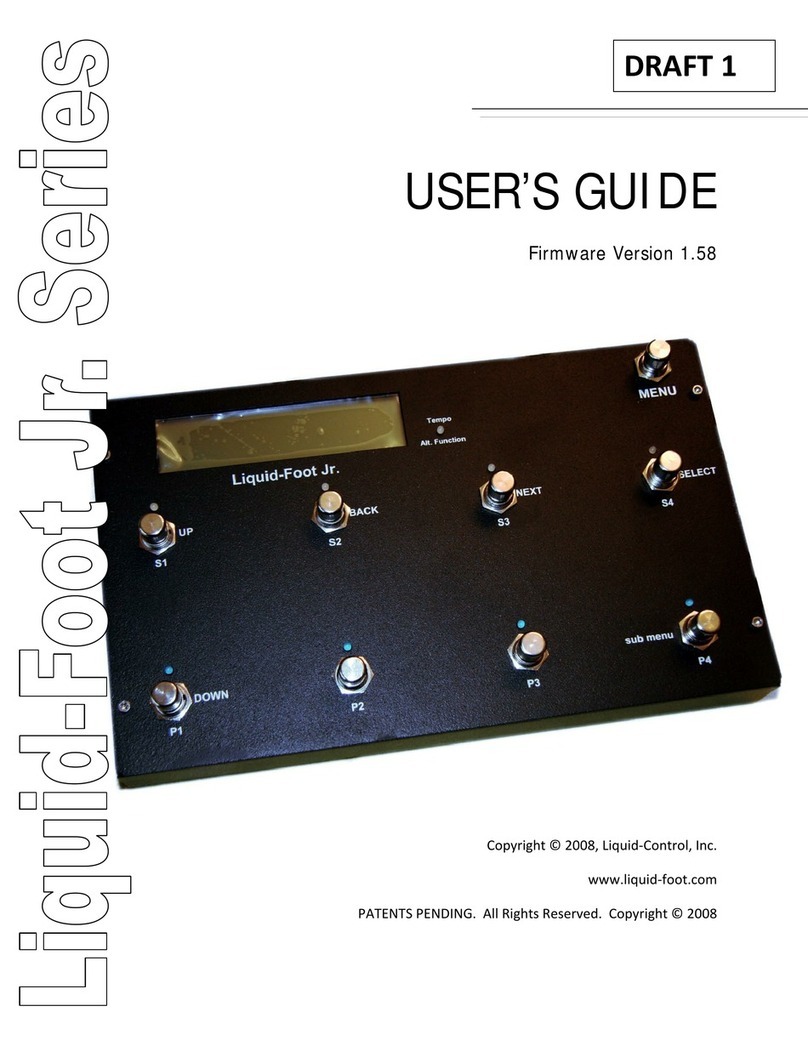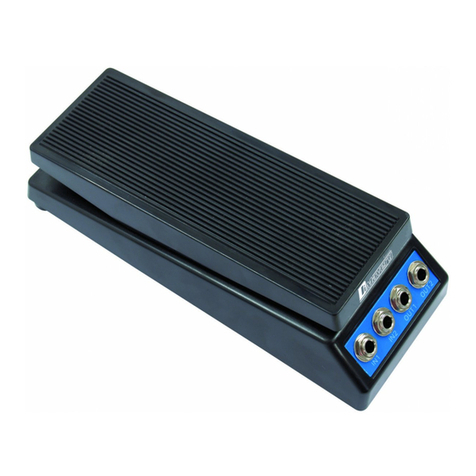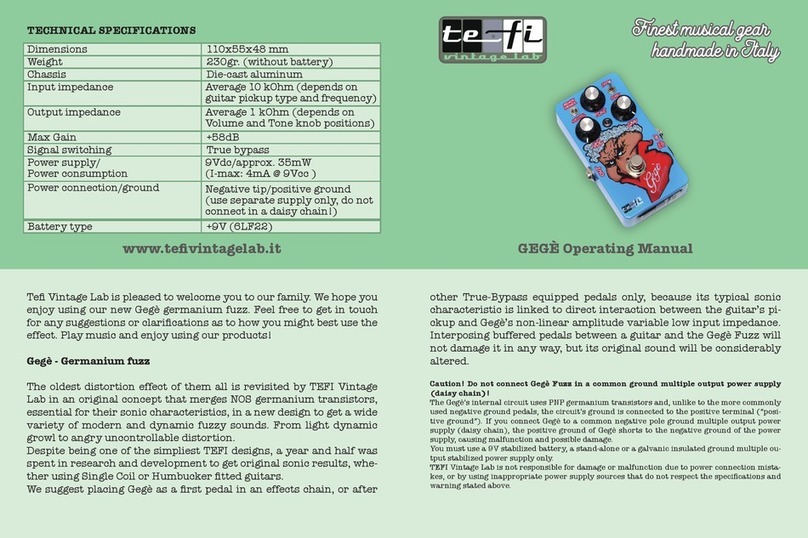
2M
Distortion Tone Volume
-
+
123 1231 2 3
1234 678
16 15 14 13 12 11 10 9
17
18
19 20 21 22 23 24
1
2
3
4
5
6
1
2
3
4
5
6
7
8
9
TIP TIP
SLEEVE
RING
A100KB100KB10K
22K
39K
.0039µ
.22µF
.01µ
.0039µ
2M
10K
4.7µF35V
470p .1µF
.047µ
8.2K 1M
1M
1M
8.2K
220p
.1µF
MPS
A13
E B C
Q2
MPS
A18
E B C
Q1
SLEEVE 180
RED
BLK
103J
A
B
EDC
HGF
Using a volt meter, connect the ground side lead of the meter to any
ground point on the pedal. One ground point would be the input or
output jack’s sleeve lug. The other volt meter lead will be used to
measure DC voltage at the test points listed here.
If you are using only a battery for power, be sure to
plug a guitar cable into the input jack when taking
measurements. Any major differences from the
voltages listed should indicate a problem area.
A(Power Supply)
B(Indicator LED Anode)
C(Q1 Collector)
D (Q1 Base)
E(Q1 Emitter)
F(Q2 Collector)
G(Q2 Base)
H (Q2 Emitter)
DC Test Points
9.1 VDC
2.6 VDC
2.6 VDC
3.0 VDC
7.0 VDC
2.2 VDC
1.1 VDC
0.0 VDC
Measurement
The Aggressor Troubleshooting Supplement
After thoroughly double-checking your connections, the next step is
to take DC voltage measurements to help locate problem areas.
Measuring AC Voltages from the Guitar Signal
Once your DC voltages are in order, if your kit is still not working properly, you can
measure AC voltages along the signal path to troubleshoot further.
You will need a volt meter that can measure the small signal AC voltages that electric
guitars put out. The output signal from your guitar will likely be less than 1 V.
First, measure the output signal directly from your guitar. You can do this by plugging your
guitar cable into the guitar and leaving the other end of the cable disconnected. Connect your
meter across the disconnected ¼" plug's "tip" and "sleeve" sections. Make sure your guitar's
volume and tone controls are turned up and strum a chord. When you strum, you should see
the AC voltage reading on the meter quickly rise to some maximum value and then fall back to
0 VAC when you stop strumming and the strings are at rest.
Sleeve Tip
Sleeve
Terminal
(Ground)
Tip
Terminal
(Output)
Tip
Spring
¼” (Mono) Plug
¼” Jack
Once you are able to measure the output signal from your guitar directly, plug the guitar into the input jack of your kit and use the AC test points to measure the guitar
signal along the signal path. Start with test point one and move along in order. You should be looking to identify the last test point where the signal seems normal and the
first test point where the signal seems unusual or where it is no longer even present.
12
34
5
6
Lettered test points are for DC
Numbered test points are for AC

